Source: Rui Technology

Image Source: Generated by Wujie AI
There is no doubt that the most important product technology breakthroughs in the technology industry in 2023 come from large models and generative AI technology. From top national leaders to ordinary netizens, everyone has witnessed the breakthrough changes brought about by large models. At the beginning of the year, Microsoft co-founder Bill Gates expressed his feelings in an interview with the German business newspaper:
"ChatGPT is as important as the invention of the Internet and will change the world."
Smartphone manufacturers have also seen the technological breakthrough of large models and the huge potential when combined with smartphones.
In May of this year, Google announced at the I/O developer conference that it would embed on-device large models in Pixel, and later, mainstream smartphone manufacturers were reported to support large models on their phones, including Samsung, Huawei, Xiaomi, OPPO, vivo, and Honor.
By the end of the year, in addition to Samsung and Honor officially launching new phones with on-device large models in early 2024, all major manufacturers have integrated or accessed independently trained large models on their smartphone terminals. However, for most smartphone users, what may be of more concern is what it really means to have large models on smartphones.
1. What is the current status of large model smartphones? Which manufacturers have done it?
Strictly speaking, the mobile phone industry is still on the eve of the AI large model melee. Some manufacturers are on the verge of officially bringing large models to smartphones, while others are still making some preparations, and some are in earlier preparation stages.
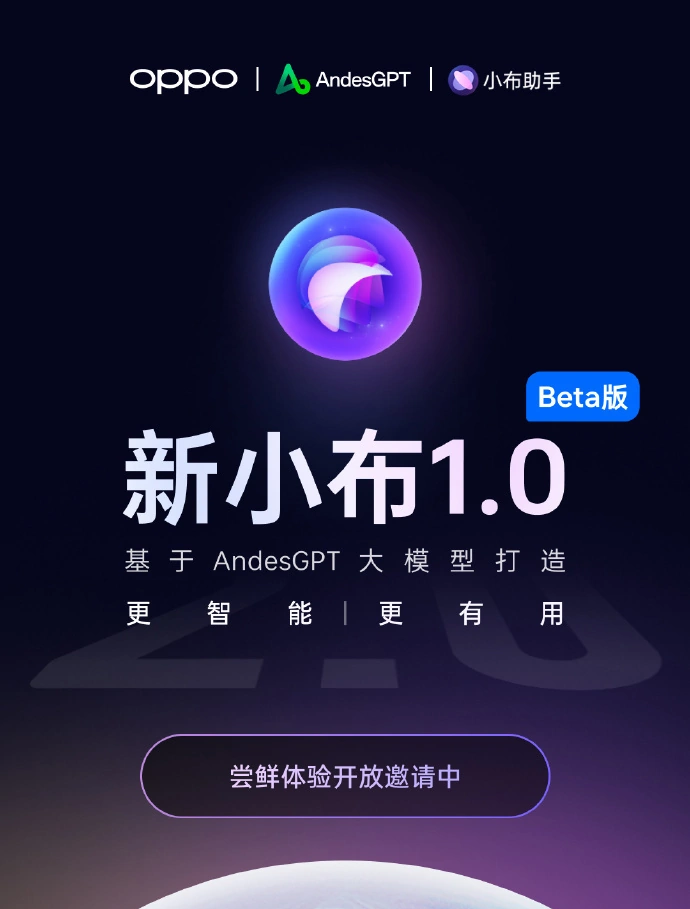
Image/ OPPO
Huawei, Xiaomi, and OPPO have integrated independently trained large models into their latest system versions and applied them to AI assistants such as Xiaoyi, Xiaoai Tongxue, and Xiaobu, all of which are currently in the public testing phase. The vivo X100 series first launched with the independently trained Blue Heart on-device large model, which is also applied to the Blue Heart Xiao V.
Google was earlier than vivo, officially landing the on-device large model PaLM2 (Gecko Edition) on the Pixel 8 Pro in October. On December 6, after Google released the new generation large model Gemini, it quickly updated the lightweight Gemini Nano to the Pixel 8 Pro and integrated Gemini Nano's capabilities into the Android system.
As for Samsung and Honor, it can be basically confirmed that the new models to be released in early next year—Galaxy S24 series and Magic6 series—will be the first to be equipped with on-device large models. The Samsung S24 will be equipped with the independently trained Gauss large model, while Honor revealed at the Qualcomm Snapdragon Summit:
The Honor Magic6 will be equipped with the new third-generation Snapdragon 8 mobile platform, supporting a 7 billion parameter AI on-device large model.
2. What value does a large model smartphone bring to users?
In the long run, the fundamental change brought about by large models lies in the transformation of human-computer interaction, and users will migrate from GUI (graphical user interface) to new interaction methods, which will inevitably overturn our most important mobile devices—smartphones. As Zhang Qingyuan, CEO of Kingsoft Office, pointed out, Office has always been very complex, and the learning cost of many functions is very high. AI can greatly reduce the threshold for use.
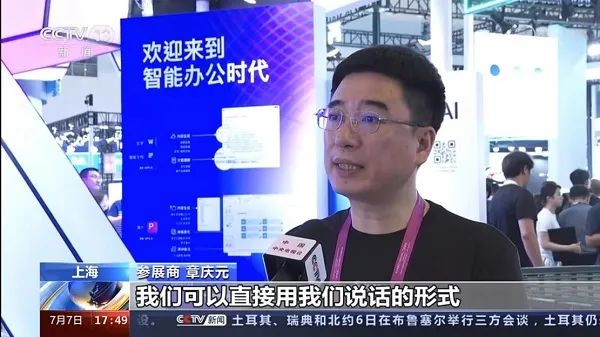
"Operating" software in a conversational manner, Image/CCTV
Of course, the transformation of interaction methods is a long-term, imperceptible change, but users hope to see improvements that are "touchable and usable." At present, almost all manufacturers prioritize entry through AI assistants.
Similarly, for users, the most intuitive feeling after accessing large model support is that the built-in AI assistant in the phone can better understand the user's natural language expressions, leading to more natural conversations. In simple terms, AI assistants with the support of large models can better understand human speech, including more complex voice commands, to some extent solving the long-standing problems of AI assistants in the past.
Also benefiting from large model support, AI assistants at the system level can more conveniently implement operations such as article summarization, generating copy/articles, and image processing. In addition, on the Pixel 8 Pro, Google not only made Google Assistant and Photos support large models, but also recently implemented on-device offline text transcription and automatic replies.

AI automatic reply, Image/Google
Although the consensus is to bring large models to smartphones, overall, smartphone manufacturers are still in an exploratory stage, and both consumers and smartphone manufacturers need to adapt to the new changes.
3. What is the difference between a large model smartphone and a regular smartphone + ChatGPT or intelligent assistant app?
The core difference lies in the privacy protection of personal data and the processing of local data, which is basically the reason why on-device large models are imperative.
In simple terms, although cloud-based large models have an absolute advantage in computing power, there is a significant risk of privacy leakage. On the contrary, the data processing of on-device large models is all done on the device, and the user's personal data will not be uploaded to the cloud server. Only then can users feel comfortable entrusting their data to AI for learning, which is a prerequisite for the smartphone AI assistant to truly become a personal assistant.

Zhao Ming, CEO of Honor, Image/Honor
As Zhao Ming, CEO of Honor, pointed out, on-device AI large models can better understand users, "knowing what time I go to bed, knowing what I like to eat, and being able to meet my immediate needs, equivalent to having the ability to understand my needs."
However, this is difficult for third-party platforms to overcome.
4. Is it necessary for a large model smartphone to have an AI chip?
In theory, it is not necessary, but in practice, it is still needed. First of all, it is important to know that when we usually talk about AI chips, we are actually referring to the broad sense of AI chips, which includes chips such as GPUs that are not specifically designed for AI computing.
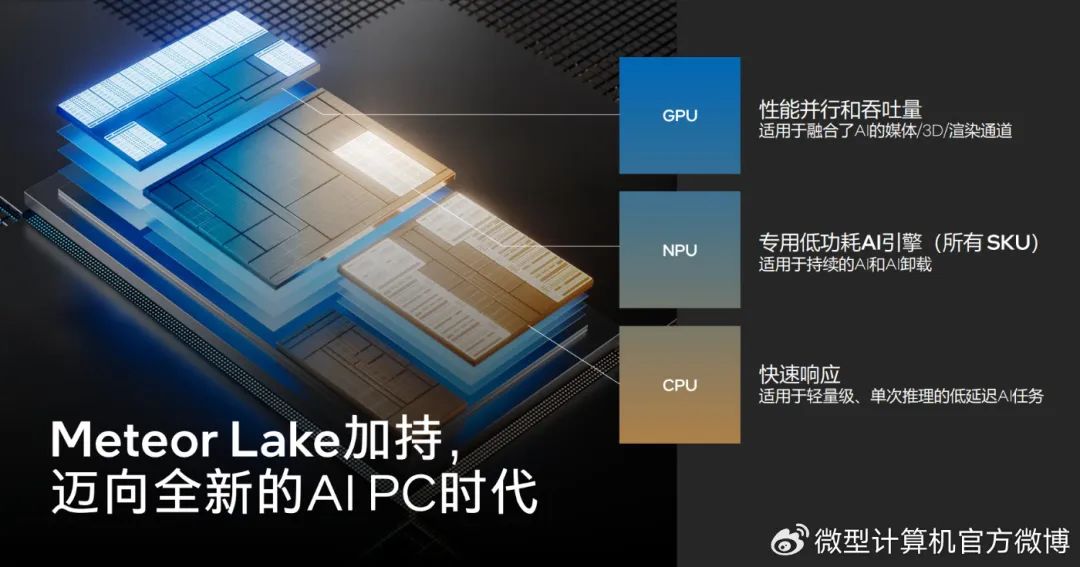
CPUs, GPUs, and NPUs can all be used for AI acceleration computing, Image/Intel
If only cloud-based large models are accessed, there is naturally no need for the terminal device to have strong computing power and AI chips. However, if on-device large models are to be run, undoubtedly more powerful computing power is required.
Theoretically, CPUs and GPUs can both perform parallel computing, but their efficiency and energy consumption control definitely cannot compare to the neural processing units (NPU/TPU) specifically designed for AI acceleration computing. So, if we don't consider the situation where smartphones access cloud-based large models, the actual running of large models on smartphones cannot do without the computational power support of AI chips.
5. Why hasn't Apple taken action?
Strictly speaking, Apple has not been inactive. At this year's WWDC conference, Apple introduced the automatic correction feature on the iPhone, where each time you press the space bar, the Transformer language model runs locally on the iPhone, "inferring" a word or sentence.
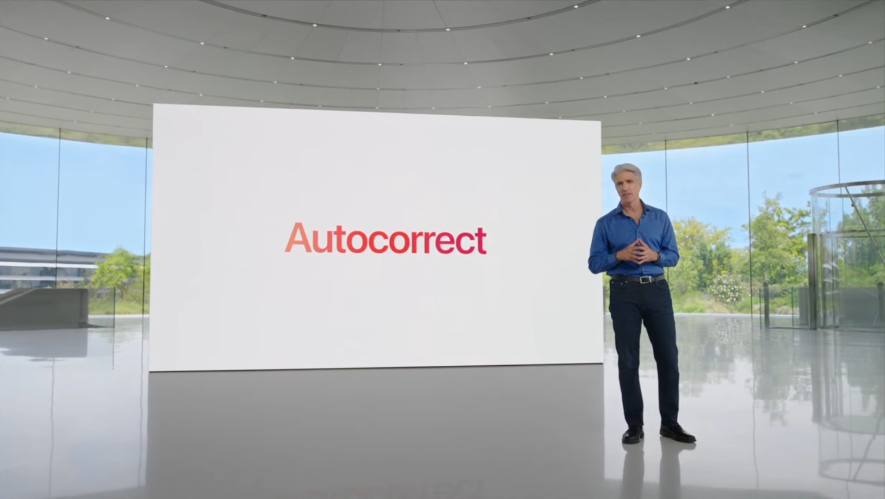
Image/Apple
In addition, according to Bloomberg, Apple has created the first chatbot service—Apple GPT—based on its self-developed large model framework Ajax, limited to internal use only.
It is almost certain that privacy-focused Apple will not choose to access cloud-based large models, but will seek to run large models locally on the iPhone, bypassing many data privacy issues faced by cloud-based AI.
But how to achieve good performance of large models on smartphones with limited computing power is a problem for all smartphone manufacturers?
In fact, if you have at least used ChatGPT (based on GPT-3.5), the logical reasoning and contextual understanding of the various domestic smartphone AI assistants currently in public testing are difficult to satisfy, even for those that have accessed cloud-based large models.
Compared to them, Apple is more conservative, or cautious, one could say.
6. Google Gemini releases Android's large model dynamics?
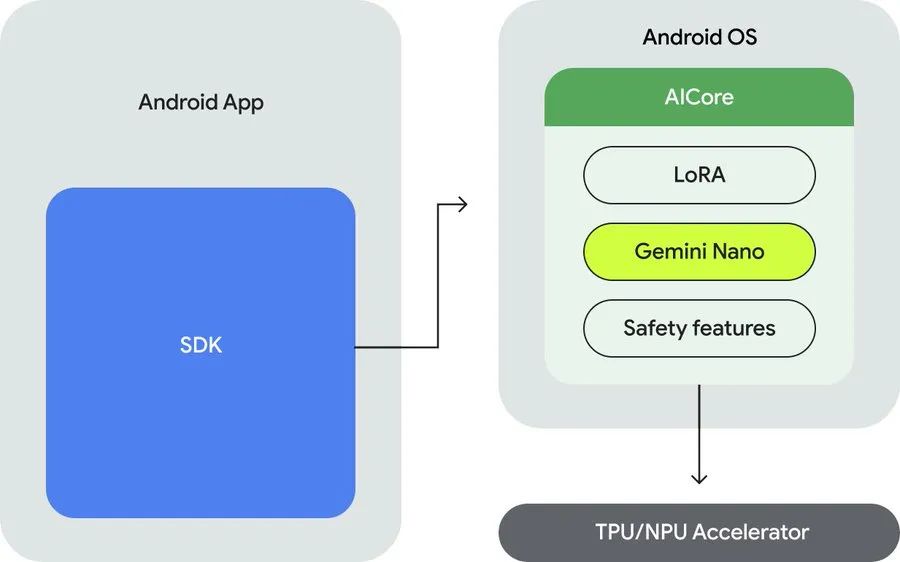
Image/Google
As mentioned earlier, when releasing Gemini, Google divided it into three versions based on different positioning and parameters: Ultra, Pro, and Nano. Gemini Nano is positioned to run locally on mobile devices and is first launched on the Pixel 8 Pro.
At the same time, the capabilities of Gemini Nano are integrated into the Android system. In the future, not only Pixel models, developers can directly call the Gemini AI capabilities of other Android phones through the AICore API (with hardware computing power requirements).
7. Is the large model smartphone a false proposition?
No, it is not.
Admittedly, smartphone manufacturers often exaggerate the current value of large models for smartphones, but the potential value brought by large models cannot be ignored. For more details, please refer to the previous answers.
Currently, smartphone manufacturers are still exploring the combination of large models and smartphones, and the actual effect is indeed not significant. Some manufacturers have only accessed cloud-based large models and have not yet integrated on-device large models, so there are still serious security issues regarding privacy data.
In fact, if we look at the introduction pages of the latest flagship models on various official websites, we can understand that smartphone manufacturers also understand the current value of large models. The Huawei Mate60 series and Xiaomi 14 both emphasize the design of the new system, but do not mention large models at all, only the vivo 100 series mentions the Blue Heart on-device large model at the end.
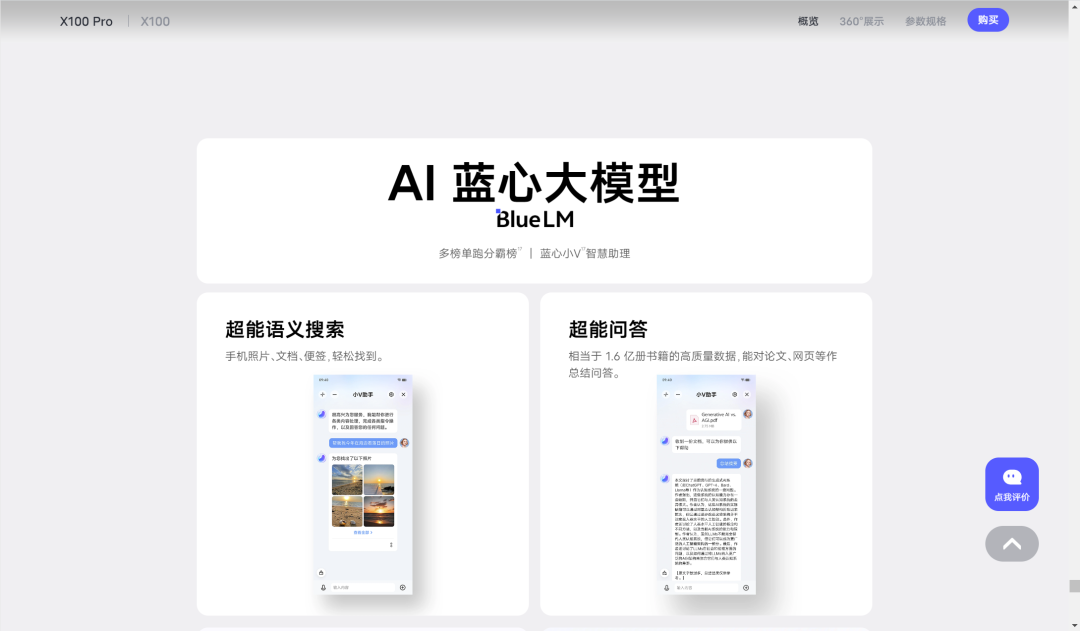
The vivo X100 is the only domestic new flagship that introduces large models, Image/vivo
So for users, at the current stage, there is indeed no need to consider the impact of large models when making a purchase. But in two or three years, things are likely to change.
8. Why are smartphone manufacturers hyping large model smartphones?
The most direct reason is to "show off." As the hottest technology direction this year, large models have appeared at almost every technology exhibition. Now, domestic smartphone manufacturers are promoting "technological leadership," so naturally they cannot miss out on large model technology.
On the other hand, with the development of smartphones to this day, both hardware and software product forms have become very mature. Large models provide an excellent "exit" both in terms of reality and promotion, breaking through the existing product forms and re-stimulating the market.
Of course, the sluggish smartphone market is also an important background factor.
免责声明:本文章仅代表作者个人观点,不代表本平台的立场和观点。本文章仅供信息分享,不构成对任何人的任何投资建议。用户与作者之间的任何争议,与本平台无关。如网页中刊载的文章或图片涉及侵权,请提供相关的权利证明和身份证明发送邮件到support@aicoin.com,本平台相关工作人员将会进行核查。




